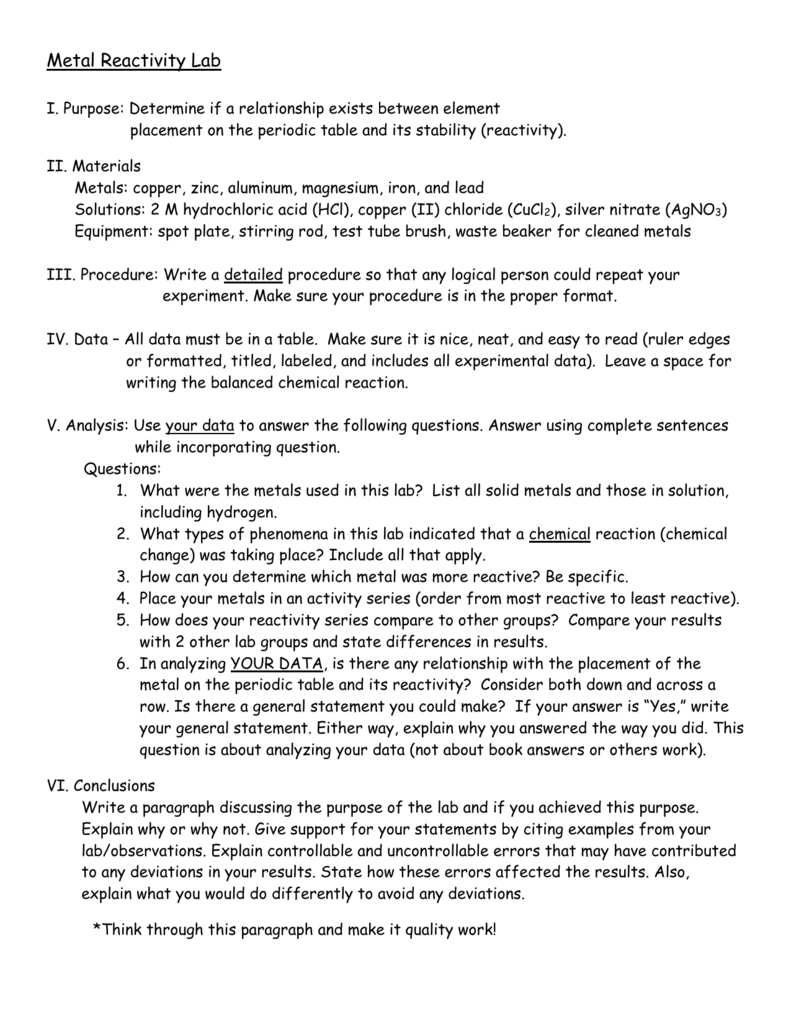
(CISA, 2007) OSHA Process Safety Management (PSM) Standard List No regulatory information available. Iron and aluminium are extracted from their ores in various ways.

The reactivity of a metal is related to its tendency to form positive ions.
Aluminum reactivity series#
EXP/IEDP = explosives/improvised explosive device precursors. The reactivity series shows metals in order of reactivity.(EPA List of Lists, 2022) CISA Chemical Facility Anti-Terrorism Standards (CFATS) Process Safety Management of Highly Hazardous Chemicals Standard ListĮPA Consolidated List of Lists Regulatory Name Occupational Safety and Health Administration's Cybersecurity and Infrastructure Security Agency's Chemical FacilityĪnd the U.S. Environmental Protection Agency's Title III Consolidated List of The aluminum powder reacted with water and other reactants to generate more heat, leading to an explosion that killed five workers. That reaction doesn’t typically take place because a layer of aluminum oxide naturally coats the raw metal, preventing it from coming directly into contact with water. In an industrial accident, the accidental addition of water to a solid mixture of sodium hydrosulfite and powdered aluminum caused the generation of SO2, heat and more water. Aluminum metal will readily react with water at room temperature to form aluminum hydroxide and hydrogen. The reaction with silver chloride, once started, proceeds with explosive violence. Fresh and aged powders are characterized by. Give a detonable mixture with liquid oxygen. This paper investigates the ageing behavior of nAl under different relative humidity conditions (RH, from 80 to 10) at the temperature of 333 K. Is attacked by methyl chloride in the presence of small amounts of aluminum chloride to give flammable aluminum trimethyl. Three industrial explosions involving a photoflash composition containing potassium perchlorate with aluminum and magnesium powder have occurred. In accordance with the testing method proposed, the most reactive powder studied was STPA-4 ultrafine aluminum powder produced by electrical explosion of. Mixing with chlorine trifluoride in the presence of carbon results in a violent reaction.

A mixture with carbon tetrachloride exploded when heated to 153☌ and also by impact. Burns in the vapor of carbon disulfide, sulfur dioxide, sulfur dichloride, nitrous oxide, nitric oxide, or nitrogen peroxide. Mixtures with finely divided bromates (also chlorates and iodates) of barium, calcium, magnesium, potassium, sodium or zinc can explode by heat, percussion, and friction. Heating a mixture with bismuth trioxide leads to an explosively violent reaction. A mixture with powdered ammonium persulfate and water may explode.

A number of explosions in which ammonium nitrate and powdered aluminum were mixed with carbon or hydrocarbons, with or without oxidizing agents, have occurred. Aluminium is more reactive than carbon so it must be extracted from its compounds using electrolysis. Reacts with metal salts, mercury and mercury compounds, nitrates, sulfates, halogens, and halogenated hydrocarbons to form compounds that are sensitive to mechanical shock. Heating a mixture with copper oxides caused a strong explosion. Reacts exothermically if mixed with metal oxides and heated (thermite process). Coating moderates or greatly moderates its chemical reactivity compared to the uncoated material.


 0 kommentar(er)
0 kommentar(er)
